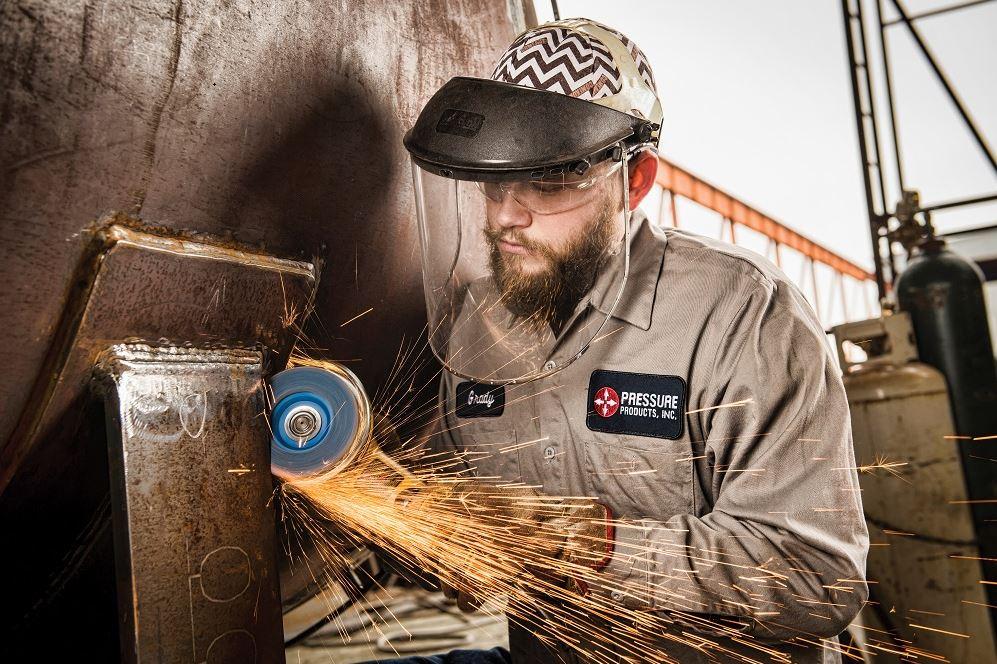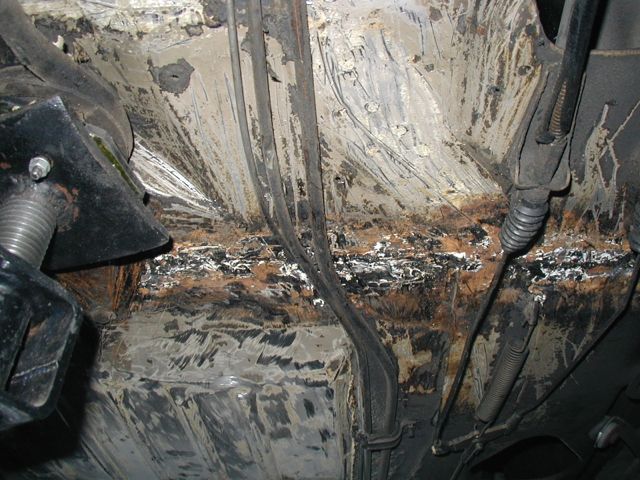Everything about Welding: Secret Insights Into Techniques and Finest Practices for Success
Welding incorporates a range of strategies, each suited for particular products and applications. Comprehending these techniques, such as GMAW, SMAW, and TIG, is necessary for attaining optimal results. The right tools and safety and security techniques can not be forgotten. As preparation and fixing play crucial functions in the welding process, understanding these elements can significantly enhance the high quality of the last product. What are the essential factors that assure an effective weld?
Comprehending Various Welding Methods
Welding techniques include a selection of techniques, each matched to specific applications and products. Among one of the most common strategies are Gas Metal Arc Welding (GMAW), Shielded Steel Arc Welding (SMAW), and Tungsten Inert Gas Welding (TIG) GMAW, likewise called MIG welding, is popular for its rate and flexibility, making it suitable for thin products. SMAW, or stick welding, is favored for its simpleness and efficiency in outdoor environments, especially with thicker steels. TIG welding supplies precision and control, making it ideal for complex job and non-ferrous metals (Montana Mobile Welding and Repair Belgrade Fabrication). Each strategy has its special advantages and factors to consider, allowing welders to pick the very best technique based upon the job's needs, product kind, and preferred results. Understanding these techniques is essential for successful welding
Crucial Welding Equipment and Tools
While numerous welding strategies require certain abilities, the right devices and devices are similarly crucial for achieving high quality outcomes. Vital welding devices consists of welding devices, which vary depending upon the strategy-- such as MIG, TIG, or stick welding. Safety equipment, consisting of handwear covers, headgears, and aprons, warranties safety and security and comfort throughout the process. On top of that, clamps and fixtures help protect products in position, making certain precision in welds. Consumables like welding poles, cord, and shielding gas are also essential parts that affect the top quality of the weld. Devices such as grinders and cutters promote surface prep work and post-weld ending up, contributing to a professional outcome. Spending in high-quality tools ultimately improves the efficiency and performance of welding tasks.
Safety And Security Practices in Welding
Appropriate safety and security techniques are crucial in the welding sector to shield workers from possible hazards. Welders need to use appropriate individual protective tools (PPE), consisting of helmets with correct shading, handwear covers, and flame-resistant garments. Appropriate ventilation is vital to minimize exposure to unsafe fumes and gases produced throughout the welding process. In addition, workers need to be educated in the proper handling of welding devices to stop mishaps. Fire safety and security measures, such as maintaining combustible materials far from the welding area and having fire extinguishers readily available, are essential. Regular assessments of equipment and offices can aid determine possible hazards before they cause crashes. By sticking to these safety methods, welders can create a more secure working setting and minimize dangers linked with their trade.
Readying Products for Welding
Preparing products for welding is an essential step that substantially influences the quality and integrity of the end product (Montana Mobile Welding and Repair Welding). Proper preparation entails cleaning the surface areas to get rid of impurities such as corrosion, dust, and oil, which can endanger the weld. Strategies such as grinding, sanding, or utilizing solvents are generally used to achieve a clean surface area. Additionally, ensuring that the products mesh comfortably is important; spaces can result in weak welds. It's likewise vital to think about the alignment and positioning of the elements, as this will influence the ease of welding and the last outcome. Finally, choosing the suitable filler product and making sure compatibility with the base metals is essential for accomplishing strong, sturdy welds
Tips for Achieving High-Quality Welds
Attaining top quality welds requires focus to information and adherence to ideal techniques throughout the welding process. Appropriate joint prep work is essential, guaranteeing surface areas are free and tidy from contaminants. Selecting the suitable filler product and welding technique based on the base steels is critical for suitable bonding. Keeping go to these guys consistent traveling rate and angle while welding can advertise and avoid issues harmony. Additionally, controlling warm input is crucial; excessive warm can result in warping and deteriorated joints. If necessary, regularly evaluating the welds throughout the procedure permits for immediate adjustments. Finally, using appropriate post-weld therapies, such as cleansing and stress alleviation, can boost the toughness and integrity of the weld, ultimately ensuring an effective end result.
Repairing Typical Welding Issues
Welding commonly provides challenges that can impact the high quality and integrity of the end product. Usual see here concerns such as porosity, inconsistent weld grains, and overheating can occur, each calling for details repairing methods. Understanding these issues is vital for welders to enhance their abilities and accomplish perfect outcomes.
Porosity Issues Explained
Porosity can often be forgotten, it remains a crucial problem in welding that can endanger the stability of a completed item. Porosity refers to the visibility of tiny gas pockets within the weld bead, which can damage the joint and lead to premature failure. This issue generally emerges from contaminants, dampness, or improper protecting gas coverage during the welding process. To minimize porosity, welders should verify that the base products are dry and tidy, use appropriate protecting gases, and preserve constant welding criteria. Regularly examining the equipment and setting can likewise help determine possible concerns prior to they manifest in the weld. Dealing with porosity efficiently is important for attaining solid, durable welds that meet top quality requirements.

Irregular Weld Beads
Irregular weld grains can greatly influence the quality and stamina of an ended up product. Numerous factors add to this concern, consisting of inappropriate traveling speed, wrong amperage setups, and irregular electrode angles. When the welder moves also rapidly, a bead might appear narrow and do not have infiltration, while relocating also slowly can create excessive accumulation. Additionally, using the wrong amperage can result in either damaging or extreme spatter, both of which compromise weld stability. The welder's technique, such as irregular lantern activity, can also cause irregular grain look. To mitigate these troubles, welders must focus on preserving stable, regulated motions and making certain proper equipment settings to accomplish uniformity in their welds. Uniformity is crucial to achieving strong and trusted welds.
Overheating and Warping Issues
Too much heat throughout the welding procedure can result in significant overheating and deforming concerns, affecting the structural honesty of the work surface. These issues often show up as distortion, which can compromise placement and fit-up, making more setting up challenging. Variables adding to overheating include the option of welding parameters, such as voltage and take a trip rate, along with the type of product being bonded. To alleviate these problems, welders ought discover here to maintain regular travel speed and suitable warmth input while keeping track of the workpiece temperature level. Additionally, pre-heating or post-weld warmth therapy can aid relieve stresses brought on by fast cooling - Montana Mobile Welding and Repair Welding. Regular assessment and adherence to finest techniques are necessary in avoiding getting too hot and making certain the long life and dependability of bonded frameworks
Regularly Asked Concerns
What Are the Occupation Opportunities in the Welding Industry?
The welding industry uses diverse profession chances, including placements as welders, designers, educators, and inspectors. Professionals can work in production, building, aerospace, and vehicle industries, gaining from strong demand and affordable salaries in numerous functions.
Just How Can I Improve My Welding Speed Without Sacrificing Top Quality?
To boost welding rate without sacrificing high quality, one need to exercise efficient techniques, preserve tools, optimize setups, and enhance hand-eye control. Routine training and looking for feedback can also considerably add to attaining much faster, top quality welds.
What Certifications Are Readily Available for Welders?
Many certifications exist for welders, including those from the American Welding Culture (AWS), the National Facility for Building And Construction Education And Learning and Research (NCCER), and various industry-specific companies. These qualifications enhance employability and show skill proficiency.
Just How Does Welding Influence the Characteristics of Metals?
Welding influences the homes of steels by altering their microstructure, which can lead to modifications in solidity, ductility, and strength. Warm input and cooling rates throughout the process greatly affect these material features.
Can I Weld Dissimilar Metals Together?
